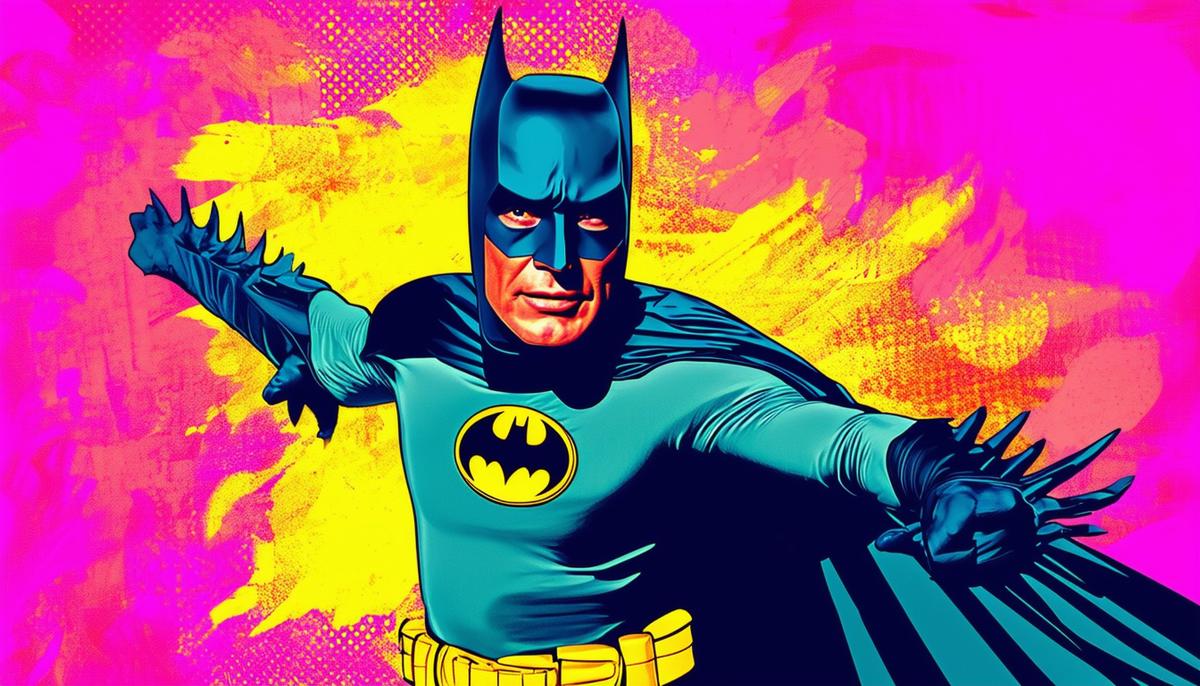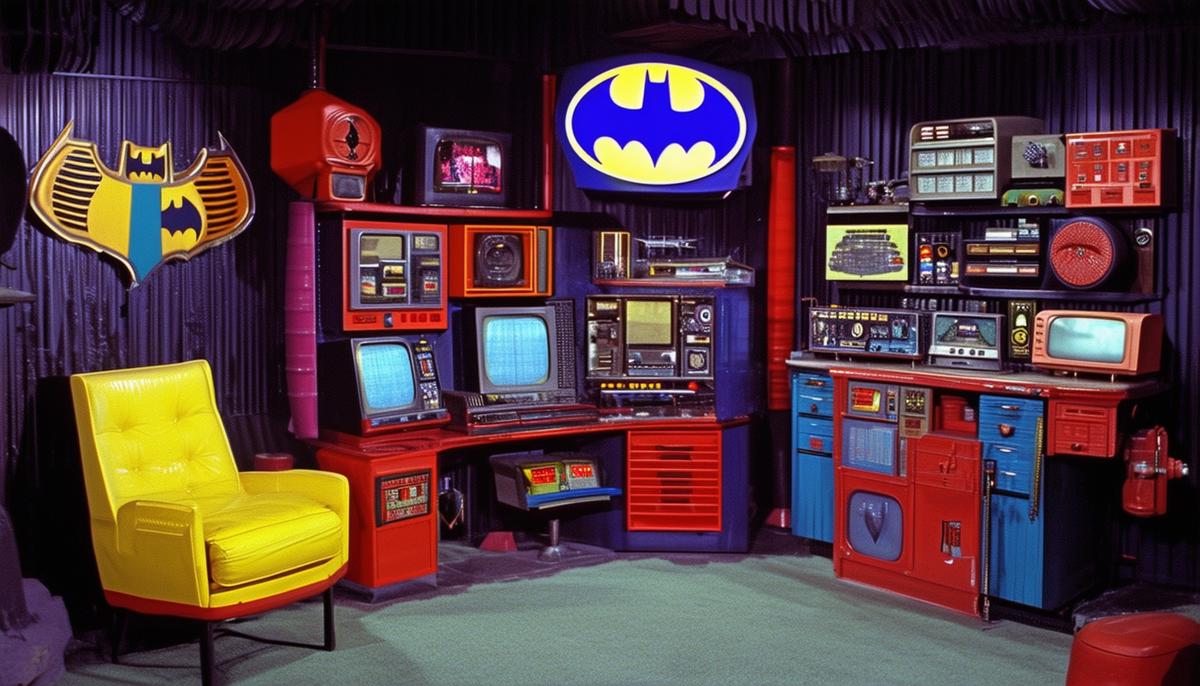The Rise and Impact of Batman '66
"Zap! Pow! Wham!" When Adam West first donned the cape and cowl in 1966, Batman '66 exploded onto the scene like a batarang through a window. This colorful caper was more than just a TV show; it was a cultural phenomenon. Bringing life to Gotham City, this Batman wasn't about the brooding Dark Knight we know today. Instead, it embraced a style as bright as the newly minted color televisions it aired on.
No dark alleys here—just vivid hues and flashy villains. Cesar Romero's Joker, with his mustachioed grin underneath that white face paint, added a flair of flamboyance unmatched in villainy.
Batman '66 had audiences hooked faster than you could say "Holy sitcom, Batman!" Adam West, with his perfectly quirked eyebrow and ever-present moral compass, was the crime-fighting hero perfect for a time needing a bit of whimsy. With his trusty sidekick, Robin, played by Burt Ward, by his side, they tackled Gotham's rogues gallery in a series that knew just when to throw in the right punchline.
Despite the campy antics, Batman '66 wielded a unique brand of storytelling that hooked both youngsters and their parents, making it a family event in living rooms across the nation.
Bat-gadgets and Gizmos
Batman's utility belt was a treasure trove of bewildering contraptions, portending a future where tech and teen dreams collided. You could almost say it was as if Wayne Enterprises had a whimsy department! Each week, viewers tuned in to see what new marvel would make an appearance, dressed in those eye-popping colors that screamed 1960s flamboyance.
A Lasting Legacy
The legacy? Everlasting. Adam West's Batman paved the path for caped heroes yet to come. From merchandising mania to movies that followed in its enormous footsteps, it inspired a whole array of superhero stories. Even if the series ended, its impact never did. Re-runs continue to bring smiles, while its over-the-top antics resonate through homages, memes, and pop culture parts unknown. Batman '66 taught us that heroes could be colorful, series could be sensational, and that sometimes, the true superpower was making audiences giggle at a good pun.

Challenges and Decline of Batman '66
As the Bat-Signal dimmed by the end of season two, the whimsical escapades of Batman '66 began to lose their spark. The show's colorful villainy had become monotonous, spinning viewers into a loop of "capture-and-release" scenarios. Audiences found themselves tangled in repetitive plots, yearning for fresh thrills instead of more "tune in next time" fare.
Production Hurdles
- Quickfire schedules led to rushed scripts
- Conveyor belt of content stalled the creative engine
- Attempts to revitalize interest with Yvonne Craig's dynamic Batgirl fell short
NBC's interest in saving Gotham was a glimmer of hope. The network saw potential in reviving the caper's allure and nearly wheeled in with a rescue mission. Alas, ABC bulldozed the set to the ground, extinguishing any chance of a revival before NBC's plan could unfold.
Legacy and Impact
While Batman '66 retreated into the archives, it didn't vanish into obscurity. Its legacy paved avenues for future adaptations of the Dark Knight. The original series left behind an indelible mark on pop culture, nudging the countless adaptations that followed to find their unique paths. It taught filmmakers and audiences alike that it's okay to embrace theatricality and play up the color palette.
"Though this particular Batman's sun set, the strong lantern it held high still shines."
From boomers recounting tales of its technicolor heyday to new generations discovering its charm through reruns, the essence of Batman '66 endures, a testament to a time when heroes fought crimes with a grin and a groovy sense of panache.

Though Batman '66 may have faded from the screen, its vibrant spirit continues to shine brightly. It taught us that heroes can bring laughter and color to our lives, leaving a legacy that echoes through generations. The caped crusader's adventures remind us of a time when battling villains was as much about style as it was about justice.
- West A, Ward B. Back to the Batcave. Berkeley Trade; 1994.
- Garcia B. Batman: A Celebration of the Classic TV Series. Titan Books; 2016.
